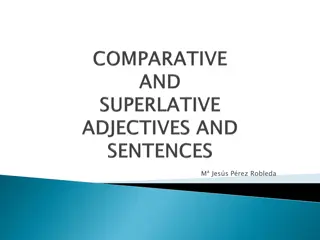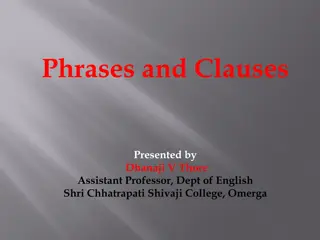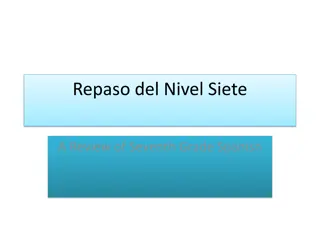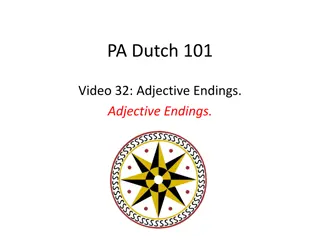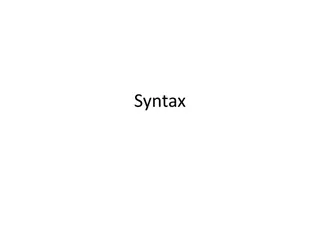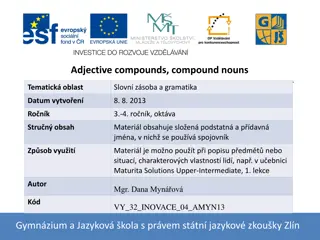Mastering Adjective Comparisons in English Language Learning
In the English language, understanding how to use comparative and superlative forms of adjectives is crucial for effectively comparing different characteristics of people, things, animals, or places. By employing specific spelling rules and dividing adjectives into short and long categories, learners can enhance their skills in creating comparisons accurately.
Download Presentation

Please find below an Image/Link to download the presentation.
The content on the website is provided AS IS for your information and personal use only. It may not be sold, licensed, or shared on other websites without obtaining consent from the author. Download presentation by click this link. If you encounter any issues during the download, it is possible that the publisher has removed the file from their server.
E N D
Presentation Transcript
Academia: Idiomas Ingl s VI Unidad 2 Tema: 2.2 Comparaci n de dos o m s elementos Profesora: Lic. Katya Gabriela Ortega Mendoza Periodo: Julio Diciembre 2015
Tema: Comparisons Resumen (abstract) We have the possibility to use the comparative and superlative forms of adjectives whenever we want to sum up different characteristics that two or more people, things, animals, places, etc. have. Palabras clave (keywords): adjectives, comparative form , superlative form.
Pay attention to these images... But this elephant is biggerthan the dog. This dog is big. So the elephant is the biggest of all. So the dog is smaller than the elephant. This mouse is the smallest of all.
Comparative Superlative form We use the comparative form to compare two people, animals or things. An adjective in comparative form is usually followed by the word than. (Mitchell, 2006)
We use the superlative form to compare one person, animal or thing with others of the same kind. The article The comes before an adjective in superlative form . (Mitchell, 2006)
Comparisons To use the adjectives in comparative or superlative forms, we are going to divide again the ADJECTIVES in two groups according to their sounds Long adjectives Short adjectives
We are going to divide the ADJECTIVES in two groups according to their sounds: Short Adjectives (1 syllable / sound) Long Adjectives (2 or more syllables / sounds) Beautiful Expensive Horrible Small Big Safe Fat Interesting
Spelling rules With adjectives of one syllable (short adjectives) we add er to form the comparative, and est to form the superlative Tall Taller than- The Tallest With adjectives of more than 2 syllables (long adjectives) we add more to form the comparative and most to form the superlative. Beautiful More beautiful than The most beautiful
With two-syllable adjectives ending in y we drop y and add ier and -iest Happy Happier than The happiest With short adjectives ending in a vowel + a consonant we double the consonant and add er and -est Big Bigger than Irregular adjectives Good Better - Best Bad Worse - Worst Little Less - Least Far Further - Furthest
Complete with the correct form of the adjectives in brackets 1. Tim is the ___________ (good) driver in his family. 2. The metro is ________ (crowded) than the train. 3. Fay thinks Maths is the ____________ (easy) subject of all. 4. Bill wears __________(modern) clothes than Jack. 5. This is the _________ (hot) day of the year.
Lets check your answers 1. Tim is the best (good) driver in his family. 2. The metro is more crowded (crowded) than the train. 3. Fay thinks Maths is the easiest (easy) subject of all. 4. Bill wears more modern(modern) clothes than Jack. 5. This is the hottest(hot) day of the year.
Referencia bibliogrfica, infogrficas y/o cibergrficas Mitchel, H. Q. (2006). Top grammar elementary 2. UK: MM publications.






